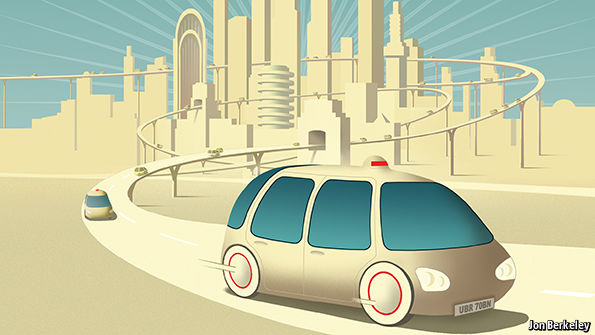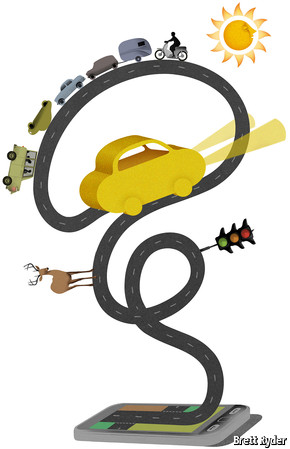Driverless cars: the new castles in the air?
Driverless cars
are only one step ahead, or so it seems. They are already being used as
prototypes and tested in entire streets and towns in the US. Big companies
specialized in new technologies (Google, Apple, Uber, Baidu, etc.) already
imagine the numerous changes such an innovation could bring to our life and the
benefits they would get from it whereas traditional car manufacturers look at
these driverless vehicles with caution if not fear.

As a matter of
fact, a driverless car is not only an innovation in terms of technology. The
whole turmoil about it is that it could revolutionize our perception of cars
and property, time management during transit times, space organization in the
car itself, etc. Indeed, who would need a personal car if most people were
using the same Uber driverless cars as taxis, gaining huge amounts of time by
not having to worry about traffic jams or simply drive? The way Google and Uber
see the future of personal transportation would turn what we consider as
personal property (cars) in a service whose handle would be left for big
companies to take care of. As a result, the companies in charge of such a network
and collected data would have access to more direct knowledge and control over people’s
habits and life.


Not only would
individuals be changed by such an innovation : our whole public space would
have to be reorganized and thought in different ways as the amount of space
attributed to cars (parking, road, etc.) would drastically decrease. This could
lead to a global urban revolution in which economic and environmental opportunities
would be numerous. For instance, one could imagine less populated city centers
thanks to the new distance one could accept between his workplace and his own
living space. In that case, cities would be less polluted and more spread.
However, companies’
enthusiasm and eagerness to implement this service must not hide the fact that
several issues remain unaddressed by prototypes and laws. Since no manmade
program is flawless, one may ask himself what would happen if an accident takes
place. Recent tests in actual towns already resulted in one of these driverless
cars bumping into a bus. What then? Who is to blame regarding the law? Is it
the programmer’s fault who did not notice the bug when running the program? Is
it the town authorities’ fault for allowing the device to be implemented and
tested? Is it the company’s fault for testing &/or selling this service? As
of today, no answer has been given to this question and many among the
insurance business say that there is no practical solution to these issues. As
long as no human life is at stake, such an issue remains trivial: “who is going
to pay for the car damages?” Yet, the question gets tougher and more serious if
a mother asks “who is to blame for my 4 year old daughter’s death?”


Moreover, the
perspective of giving away our very habits and position at any time given is
still shocking to many people; whether they realize smartphones already allow
companies which produce them to have an easy access to this data is not
relevant. Therefore, such a service has to be cautious in the way it is
presented to the public as it can easily be seen as a breach of individual privacy.
Nevertheless one may argue the same argument was already pushed forward about
smartphones without preventing people from massively adopting the newest
devices.
Last but not
least, the macroeconomic effects of this service development and implementation
are still difficult to assess since it is not clear what role the traditional car
industry would hold to in that case. From massive unemployment to a complete
renewal of an old industry, all options remain open. As of today, car
manufacturers tend to assimilate and intertwine their R&D with new
technologies, especially regarding connected devices in car.
To conclude, it is
easy to imagine all the advantages such a seductive innovation could represent
for people in their everyday life and how companies could take advantage of it.
Yet, many practical issues still stand in the way of driverless cars, among which
some seem very far from being solved.
Sources:

No comments:
Post a Comment